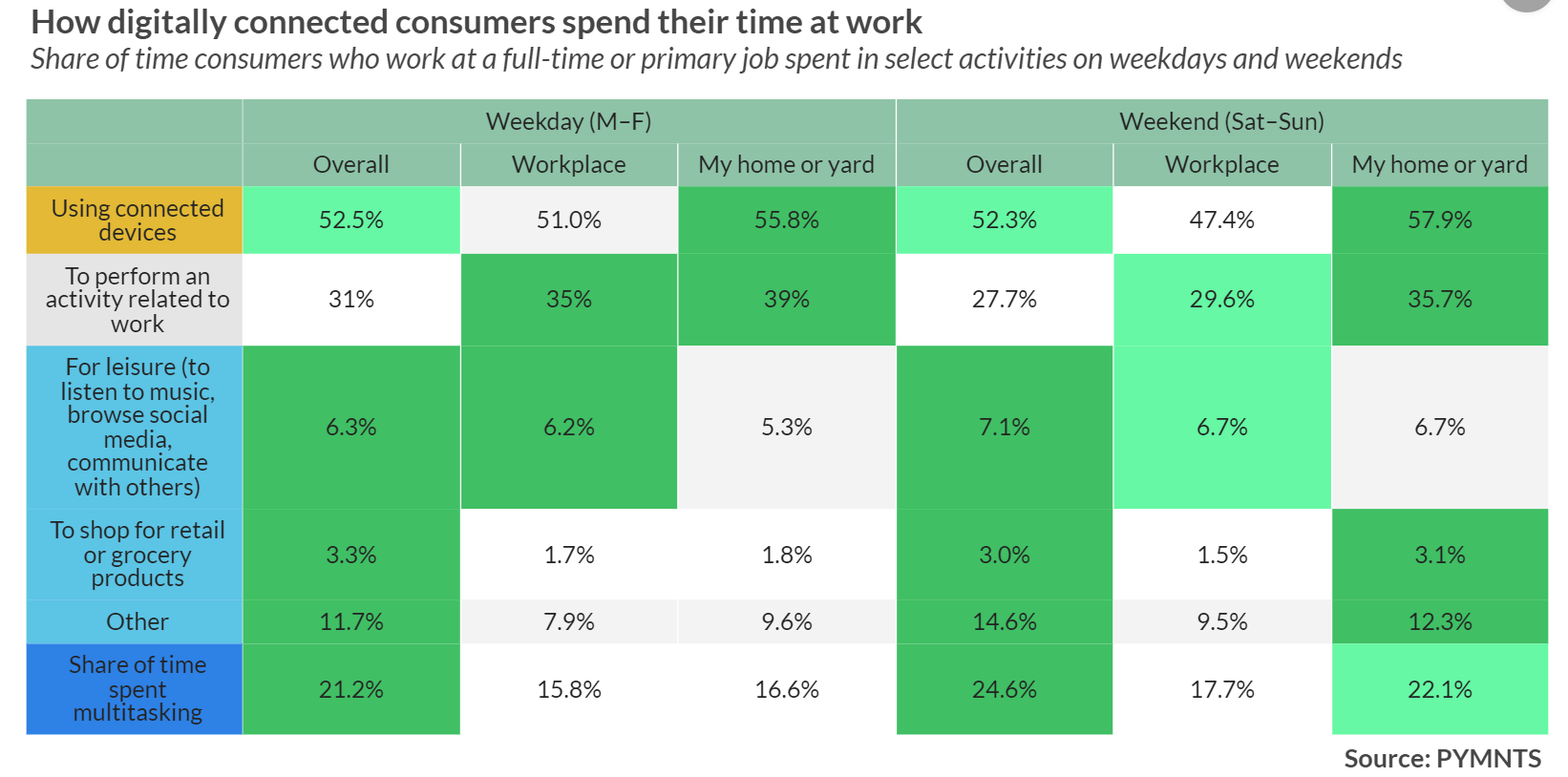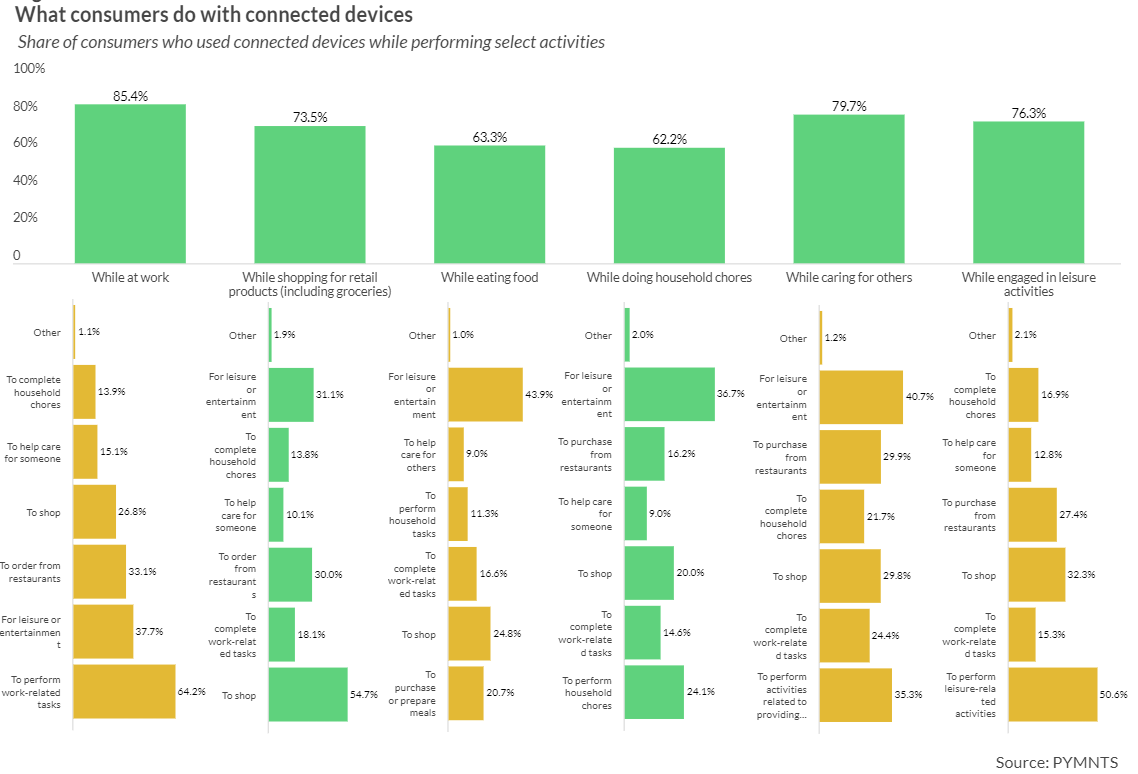Gen Z Turns to Connected Devices to Multitask at Work

From smartphones to smart TVs and voice-controlled assistants, connected devices have transformed the way consumers multitask in their daily lives. In fact, consumers are using connected devices while engaging in various day-to-day tasks, regardless of whether it’s a weekday or weekend.
PYMNTS’ data confirms that to be the case. In the “How Connected Devices Enable Multitasking Among Digital-First Consumers” edition, the latest of the “How We Will Pay” series, PYMNTS Intelligence draws on a survey of over 4,600 U.S. consumers to assess how digital-first consumers are using connected devices and apps to carry out multiple tasks — shopping, eating, doing household chores and caring for others — both at work and at home.
Findings detailed in the study reveal that U.S. consumers spend approximately 26% of their day multitasking, which involves using a connected device to perform tasks unrelated to their main task. This share remains consistent across activities, with consumers spending about one-quarter of their work hours performing unrelated activities via a connected device.

Drilling down into the data shows that while 64% of consumers reported using a connected device to perform work-related tasks, nearly 38% of them used a connected device for leisure or entertainment while working, while 33% and 27%, respectively, used a device to order from restaurants and shop as they worked.
When it comes to caring for others, 80% of consumers used connected devices during this activity. But thanks to connected devices, these caregivers were able to perform other activities. Thirty percent purchased food and retail products, 24% checked in on work, 22% completed household chores and 41% used connected devices for leisure or entertainment — all while taking care of others.

What is worth noting is that regardless of the activity they are engaged in, connected devices enabled consumers to complete work-related tasks, with about 20% of consumers on average doing so while performing their primary activities.
Younger Consumers Embrace Multitasking
With the new generation of multitaskers comes a growing prevalence of connected devices.
According to the study, more consumers (33% of the population) now own smartwatches, up from 23% and 19%, respectively, in 2020 and 2019.
“We also see increasing ownership of smart home devices. Today, 9% of consumers have smart refrigerators, compared to 5% in 2019. Ownership of connected thermostats is also up, with 15% of consumers owning one now compared to 10% in 2019,” the study further noted.
On average, consumers own six connected devices, with millennials, bridge millennials and high-income individuals being the most connected. Smartphones remain the most widely owned device, but smartwatches have gained popularity among younger generations.
These younger consumers, particularly Generation Z, spend more time multitasking at work compared to older generations. Gen Z individuals are more likely to listen to music, browse social media, and even shop while working.
Overall, connected devices have given rise to a generation of multitaskers who seamlessly integrate work and personal activities, highlighting their significance in shaping the lives of today’s digital-first consumers.
And as advanced AI technologies become more mainstream, these multitasking habits are expected to continue growing, making traditional methods of understanding consumer behavior outdated.
